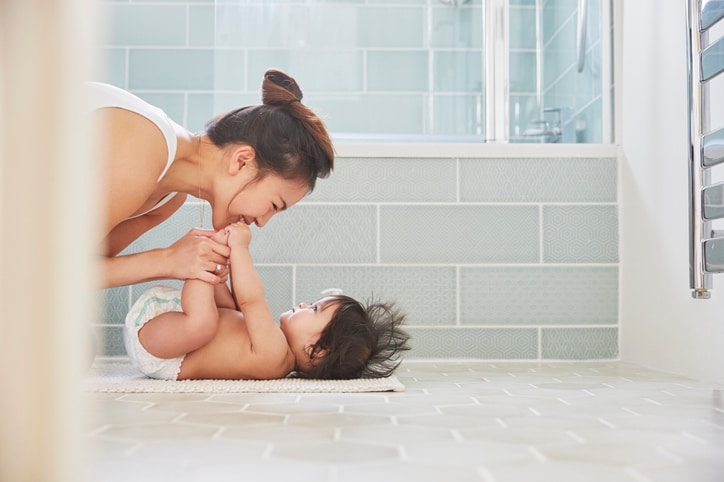Of all the potential ailments your baby may suffer from, nappy rash is one of the most common. It affects between 7 and 35% of infants at some point, according to UpToDate. Nappy rash occurs most commonly in infants between ages 9 and 12 months, but it can occur at any time a child wears a nappy.
What can make nappy rash even more challenging to treat is that it can be caused or worsened by nappy use or other factors, such as a yeast infection, an allergic reaction, or a bacterial infection. Frequent bowel movements or diarrhoea may also cause nappy rash, as prolonged exposure to faeces may irritate a baby’s skin.
It also bears noting that cloth nappies can harbour a host of unwanted germs if not washed properly. When using cloth nappies and washing them at home, it’s important to use hot water and rinse many times until all the laundry detergent is removed. Boiling for 15 minutes after washing is a good way to eliminate any remaining germs or soap.
Here are 6 home treatments for nappy rash caused by diarrhoea, yeast infection, and other common triggers.
1. Make your own nappy rash cream
Make your own natural cream as a nappy rash cure, such as the protective barrier balm found on the Mommypotamus blog. The balm combines olive oil, shea butter, coconut oil (an antifungal that can tackle yeast nappy rash), and zinc oxide. In between nappy changes, store your homemade nappy rash cream in the fridge. Before applying the cream to your baby, warm it up by rubbing it between your hands first.
A similar DIY nappy rash cream recipe on Pharmacy Times calls for 1 cup of coconut oil, 1 cup of olive oil, 4 tablespoons of beeswax pastilles, 8 drops of disinfecting lavender essential oil, 6 drops of antiseptic lemon essential oil, and 4 drops of antifungal, antimicrobial tea tree essential oil.
2. Use breast milk
Breastfeeding parents might already know that this liquid gold does more than just nourish their little one’s tummy. Although it isn’t scientifically proven as the best remedy for nappy rash, it won’t cause the baby any harm, and your child may benefit from its antibodies and natural anti-infective properties.
3. Use apple cider vinegar
Adding a cup of apple cider vinegar—which has been shown in published research to inhibit the growth of candida, a group of yeasts that can lead to fungal infections—to your baby’s bath water can help get rid of a yeast-caused nappy rash quickly. The vinegar can kill harmful bacteria and the yeast that’s likely causing the rash. Washing your baby’s bottom with a tablespoon of apple cider vinegar diluted in a cup of water each time you change their nappy could also be a helpful approach.
4. Reach for olive oil
Some doctors recommend parents use a mild cleanser after their baby’s bowel movements and plain water and cotton balls after wet nappies. But a soothing alternative can be olive oil, which possesses anti-inflammatory and antimicrobial properties. This can be a helpful remedy in the case of nappy rash, as well as rash caused by allergic contact dermatitis.
5. Apply cornflour
Consider using cornflour to dry your baby’s bottom instead of talcum powder. Keep a container of cornflour near your nappy changing area and apply it after using homemade nappy rash cream. Just be sure to keep cornflour (or any powder) away from little lungs.
6. Consider coconut oil
A greasy, emollient product can be a great source of hydration and barrier protection. One of the most natural products in this category is one you may already have at home: coconut oil. This remedy may be especially helpful for nappy rash caused by yeast, as multiple published studies confirm coconut oil is a powerful antifungal. Many mums agree it can work wonders on a yeasty rash, providing soothing protection.
That said, exploring home remedies for nappy rash may not be the best way to address more serious cases. If the rash persists, it’s worth seeking medical advice to make sure your baby hasn’t got an infection. Their broken skin can be vulnerable to infection caused by bacteria and fungus, ultimately requiring a prescription-based nappy rash cure, such as steroids, bacterial ointment, antifungal cream, or antibiotics.
